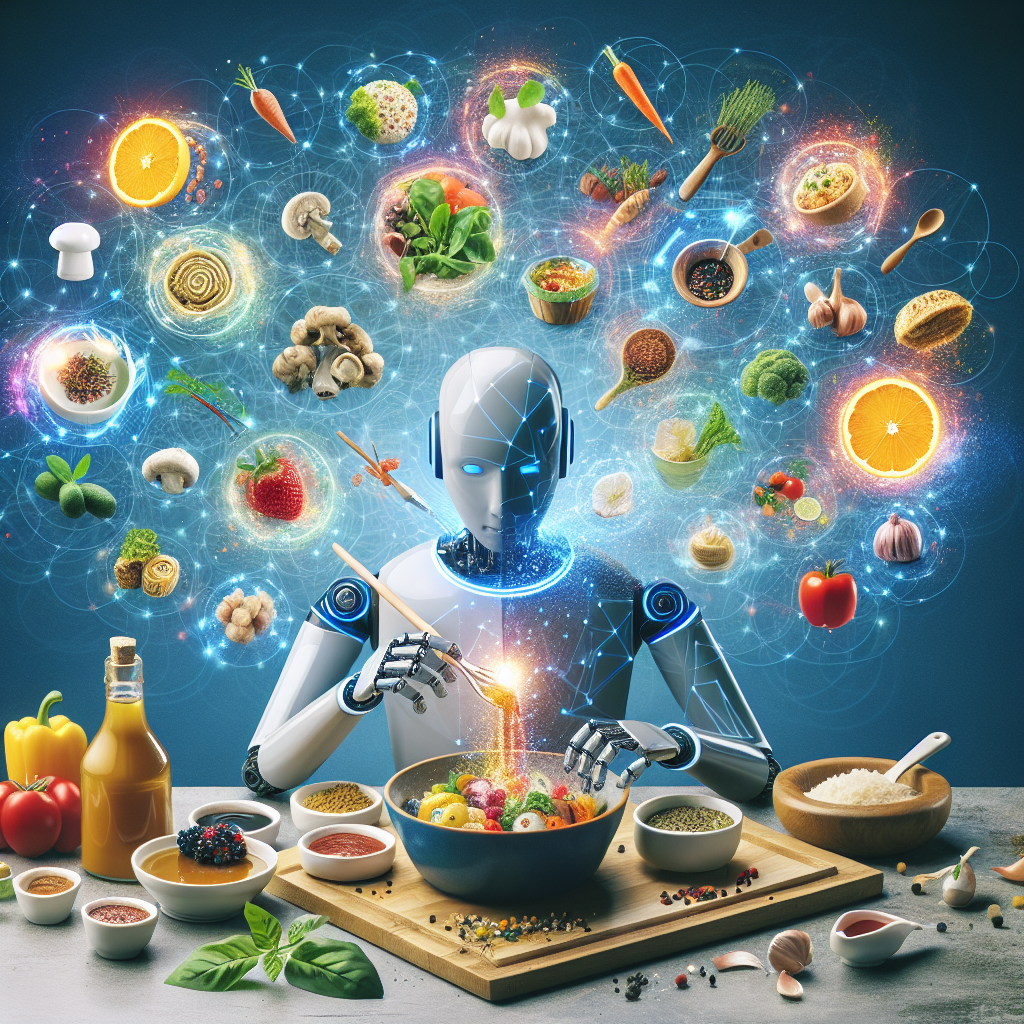AI and Culinary Creativity: Experimenting with Flavor Combinations
The culinary world is constantly evolving, with chefs and food enthusiasts always on the lookout for new and innovative ways to create delicious dishes. One of the latest trends in the culinary world is the use of artificial intelligence (AI) to experiment with flavor combinations and push the boundaries of traditional cooking.
AI has the ability to analyze vast amounts of data and identify patterns that humans may not be able to see. This makes it an ideal tool for experimenting with flavor combinations and coming up with new and exciting dishes. By inputting data on various ingredients, cooking techniques, and flavor profiles, AI can generate unique and unexpected combinations that can inspire chefs to create dishes that are both delicious and innovative.
One of the most well-known examples of AI in the culinary world is IBM’s Chef Watson, a cognitive cooking technology that uses AI to come up with new recipes. By analyzing thousands of recipes and flavor combinations, Chef Watson can create dishes that are both delicious and unexpected. Chefs can input their own preferences and dietary restrictions into the system, allowing them to customize the recipes to their own tastes.
In addition to creating new recipes, AI can also help chefs and food enthusiasts discover new flavor combinations that they may not have considered before. By analyzing data on the chemical compounds in various ingredients, AI can identify which ingredients are likely to pair well together and create a harmonious flavor profile. This can help chefs create dishes that are not only delicious but also scientifically balanced.
AI can also help chefs and food enthusiasts explore different cultural cuisines and flavors. By analyzing data on traditional dishes from around the world, AI can identify common flavor combinations and cooking techniques that are unique to certain regions. This can inspire chefs to create dishes that are authentic and true to the cultural traditions from which they are derived.
While AI can be a powerful tool for experimenting with flavor combinations and pushing the boundaries of traditional cooking, it is important to remember that it is just a tool. Chefs and food enthusiasts should use AI as a source of inspiration and creativity, rather than relying on it as a substitute for their own culinary skills and intuition. Ultimately, the best dishes are created through a combination of creativity, expertise, and passion for food.
FAQs
Q: How does AI analyze flavor combinations?
A: AI analyzes flavor combinations by analyzing data on the chemical compounds in various ingredients. By identifying which compounds are present in each ingredient, AI can predict how they will interact with each other and create a harmonious flavor profile.
Q: Can AI create recipes that are tailored to individual preferences?
A: Yes, AI can create recipes that are tailored to individual preferences. Chefs and food enthusiasts can input their own preferences and dietary restrictions into the system, allowing AI to generate recipes that meet their specific needs.
Q: Is AI a replacement for human creativity in the kitchen?
A: No, AI is not a replacement for human creativity in the kitchen. While AI can be a valuable tool for experimenting with flavor combinations and generating new recipe ideas, it is important for chefs and food enthusiasts to use their own creativity and intuition to create dishes that are truly unique and delicious.
Q: Are there any limitations to using AI in the culinary world?
A: While AI can be a powerful tool for experimenting with flavor combinations, there are some limitations to using AI in the culinary world. AI relies on data and algorithms to generate recipes, which may not always capture the nuances of human creativity and intuition. Additionally, AI may not always be able to replicate the sensory experiences that come from cooking and eating food.

